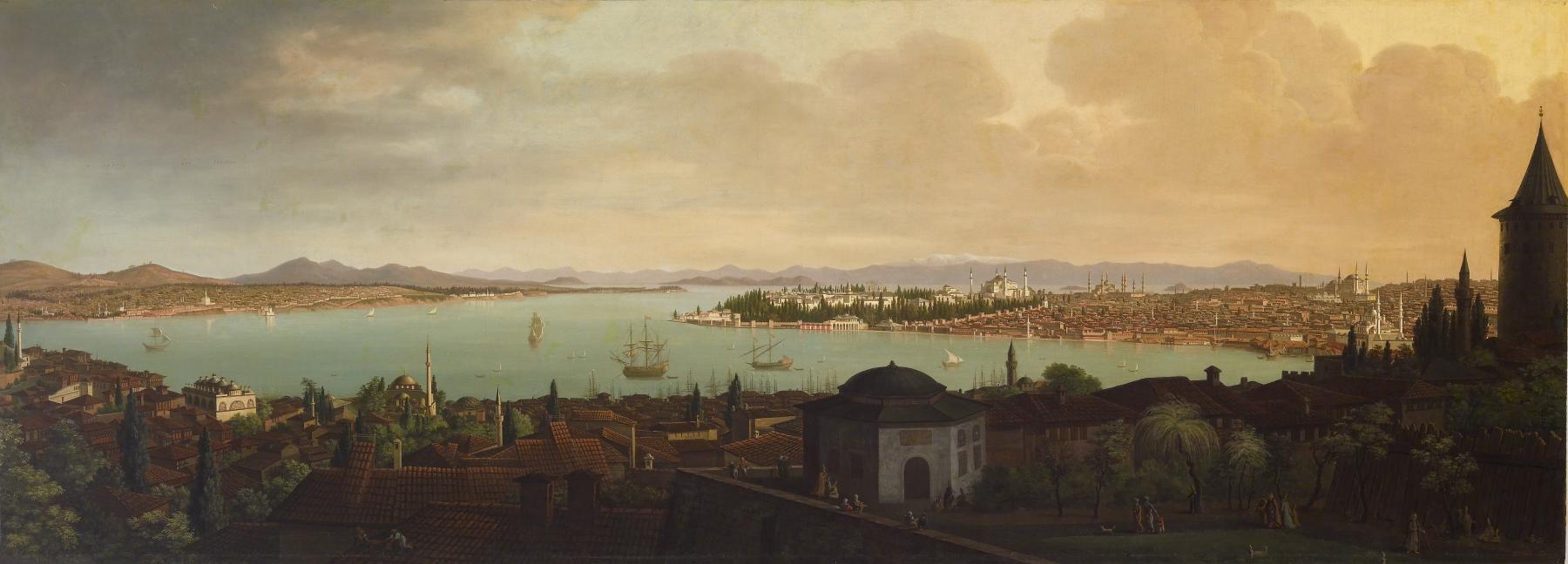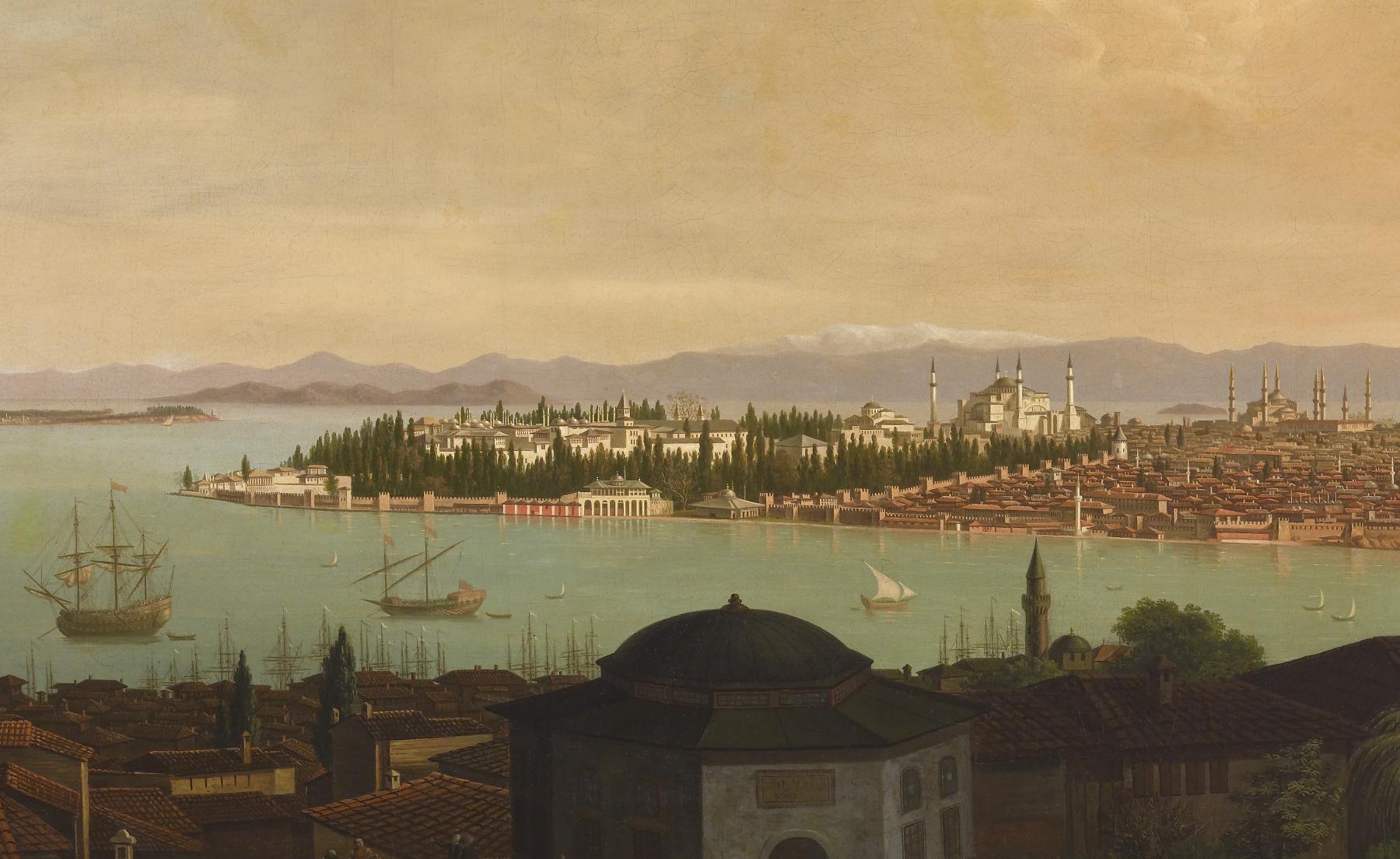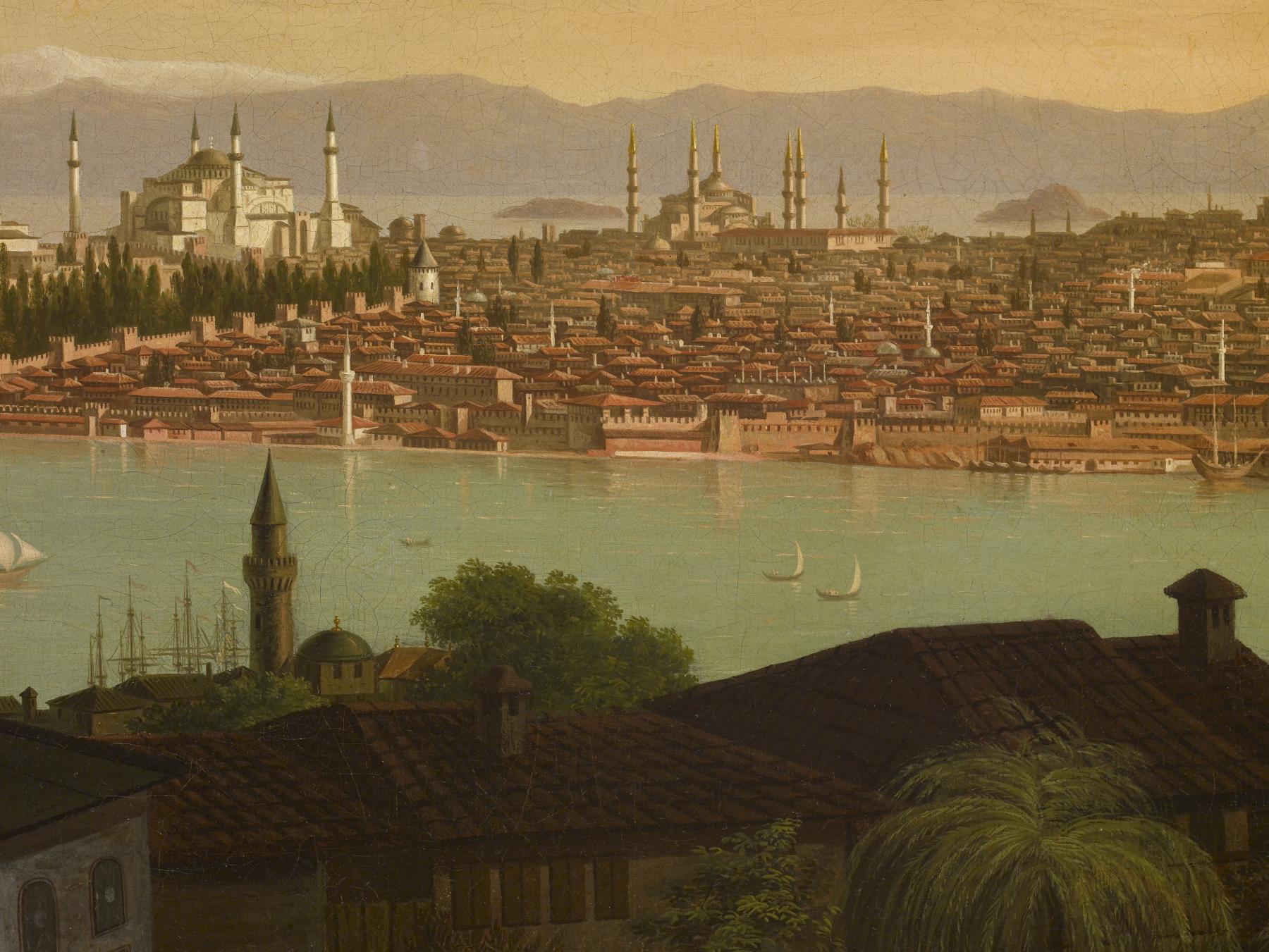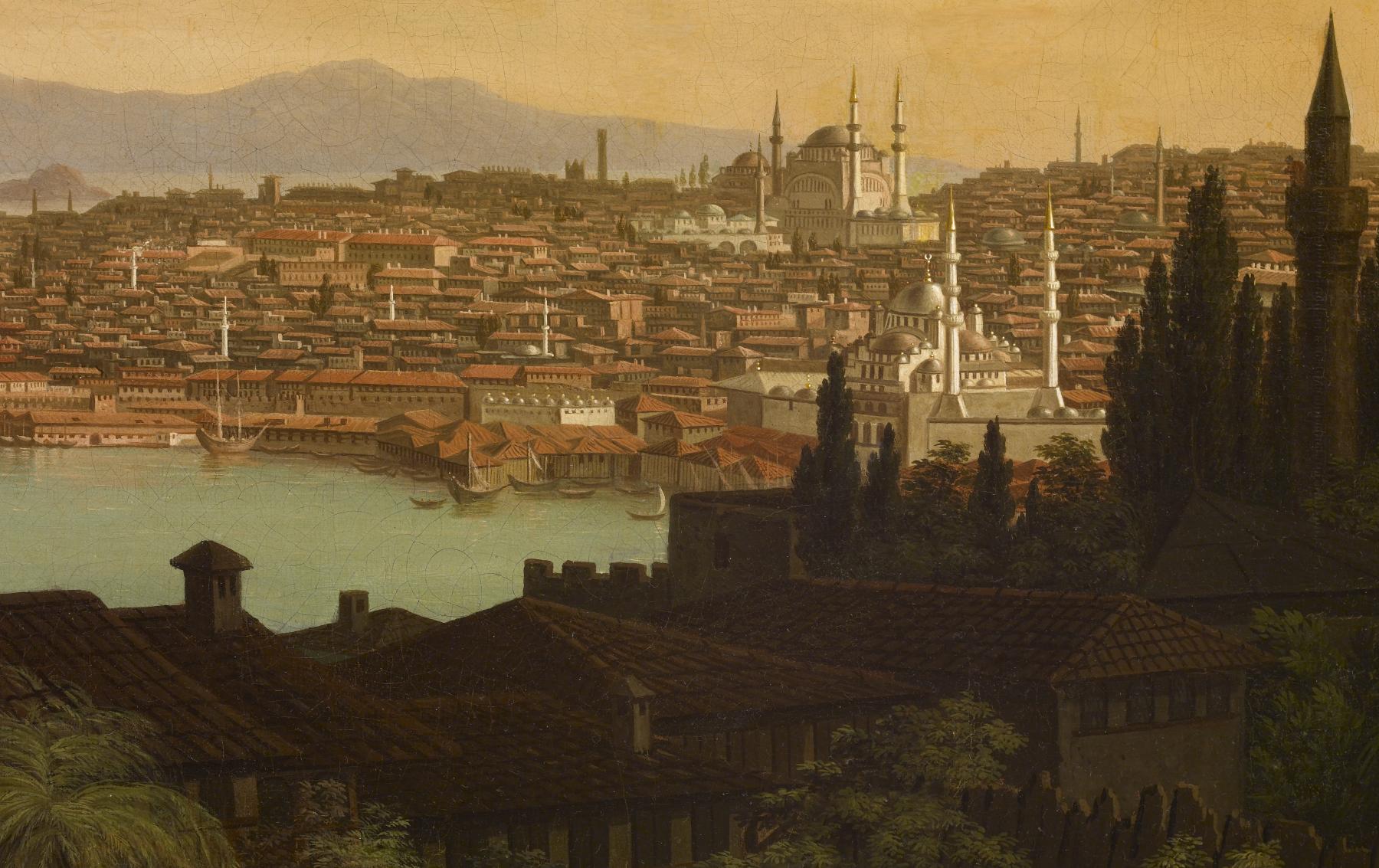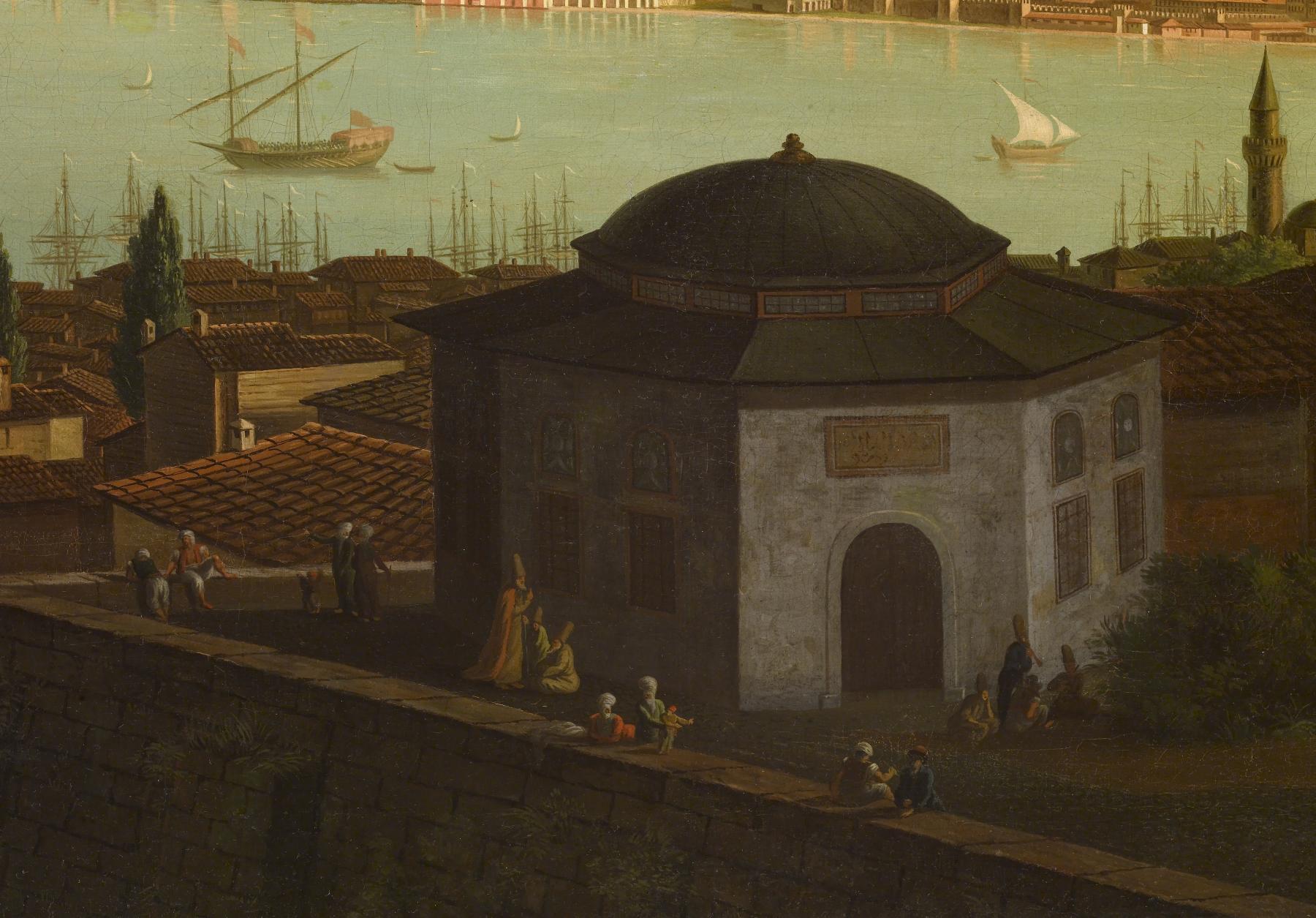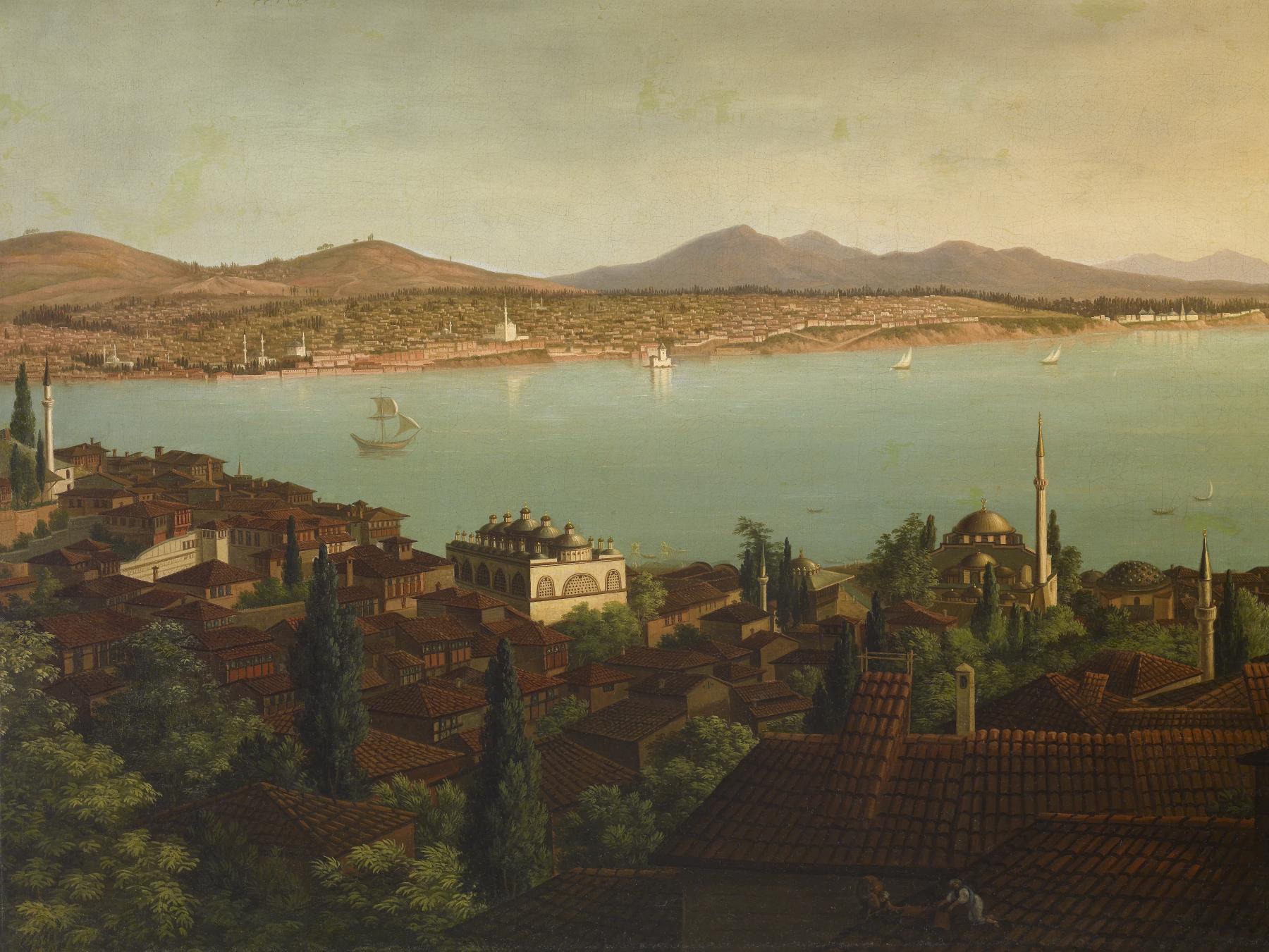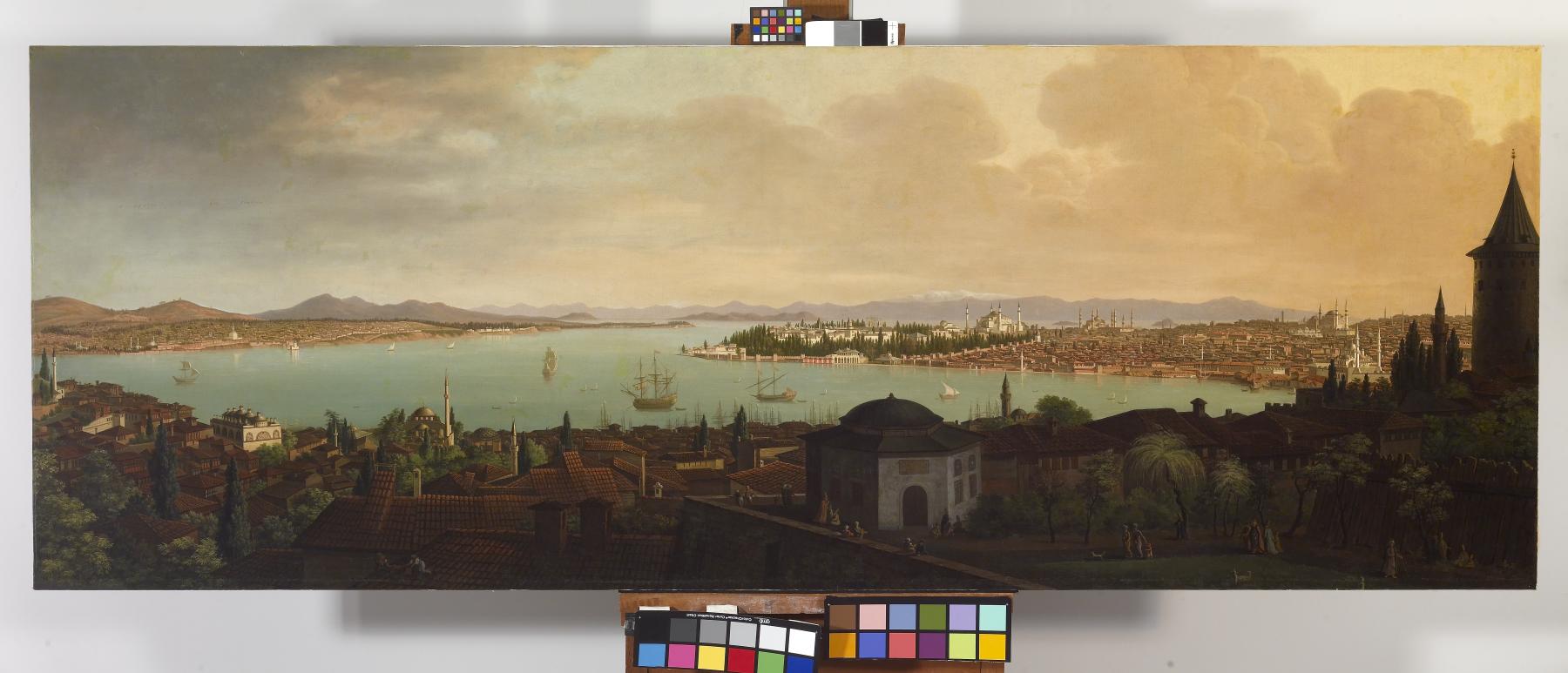View of Constantinople
(18th and 19th Centuries )
As early as the 16th century, European artists were attracted to Constantinople by the city's dramatic setting and beauty, as well as its exotic appeal. Artists working there two centuries later included Jean Baptiste Van Mour (Flemish, 1671-1737), Antoine de Favray (French, 1706-ca. 1791), and Luigi Mayer (Italian, 1755-1803). They, in turn, inspired local artists to adopt their painting methods.
In this panoramic scene, the viewer is looking south from Galata, the European quarter of the city, across the Golden Horn (a large estuary of the Bosphorus). Beyond is the Sea of Marmara.
In the foreground on the left are the Tophane fountain and mosque that was erected in 1580 by Grand Admiral Kiliç Ali Pasa, an Italian who served in the Ottoman navy at the Battle of Lepanto (1571). Dominating the extreme right is the mid-14th-century tower of Galata that was built by the Genoese as part of a fortification, but in the 19th century served as a fire station.
On the opposite shore, starting at left, is the Seraglio or Topkapi Palace, the residence of the Ottoman emperors for 400 years. The Church of Saint Irene stands out among this complex of buildings. It was built in the early 4th century by the Emperor Constantine but was transformed into an arsenal by the Ottomans. Recognizable on the right are four mosques: the Hagia Sophia, which was opened as a Christian basilica in 563 and converted to a mosque in 1453; the Blue Mosque distinguished by its six minarets built for Sultan Ahmet Cami in 1603-1617; the New Mosque erected in the first half of the 17th century for the Dowager Sultana Safiye, and behind it, the Beyazit II Mosque complex (1484/88).
Although its painter has yet to be firmly identified, it is similar to the work of Antoine de Favray, a French artist who traveled from Rome to Malta and then continued to Constantinople in the 1760s. However, the painting also very closely resembles a work in Holdenby House, Northampton, signed "Francis/Francesco Smith" (fl. 1764 – ca.1778) and dated 1771. This painting has more sky at the top. Interestingly, the Walters painting was at some point cut down at the top edge.
Provenance
Provenance (from the French provenir, 'to come from/forth') is the chronology of the ownership, custody, or location of a historical object. Learn more about provenance at the Walters.
Estate sale of a Turkish ambassador, Istanbul, ca. 1960; purchased by unknown antique dealer at the Grand Bazaar, Istanbul, ca. 1961; purchased by Commander P. Dow Berggren, Bethesda, Maryland (stationed at the time in the Mediterranean), 1962; given to Walters Art Museum, 2003.
Exhibitions
| 2015-2016 | Pearls on a String: Artists, Patrons, and Poets at the Great Islamic Courts. The Walters Art Museum, Baltimore; Asian Art Museum, San Francisco. |
Measurements
H: 33 x W: 91 3/8 in. (83.8 x 232.1 cm); Framed H: 39 1/2 x W: 98 3/8 x D: 3 1/8 in. (100.3 x 249.9 x 7.9 cm)
Credit Line
Gift of Commander and Mrs. P. Dow Berggren, 2003
Accession Number
In libraries, galleries, museums, and archives, an accession number is a unique identifier assigned to each object in the collection.
In libraries, galleries, museums, and archives, an accession number is a unique identifier assigned to each object in the collection.
37.2769

